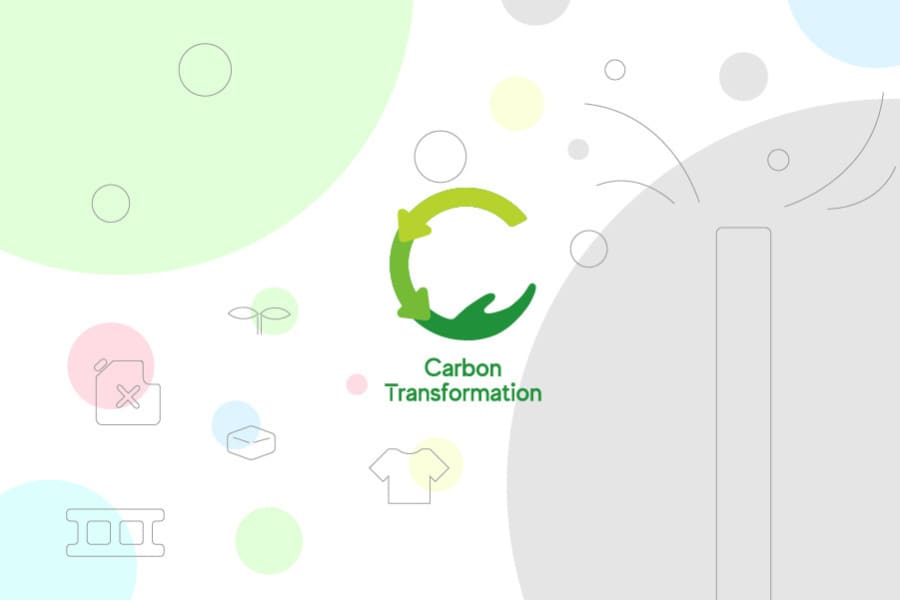What is the "Planetary Boundaries" concept: Indicating the limits of the global environment
Delivering Hydrogen: A Demonstration of Local Production for Local Consumption of Hydrogen in Namie Town, Fukushima Prefecture, Japan
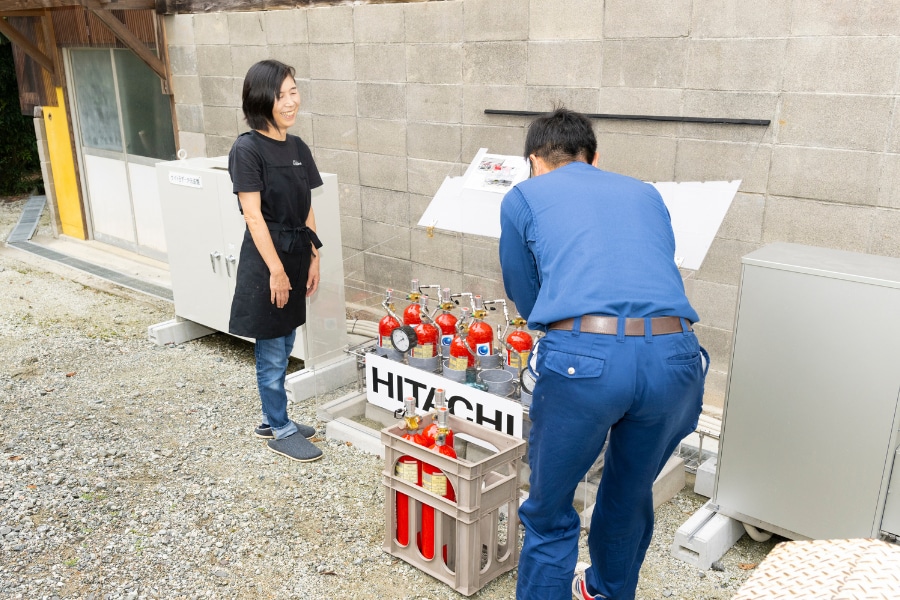
A small truck travels nimbly between houses and fields and arrives at a cafe with multiple cylinders jiggling around on the back. The driver calls out: “I have a delivery!” and quickly begins unloading the cylinders. The cylinders say “Hydrogen gas”—the commodity being delivered was not LP gas, as per usual, but hydrogen. What is hydrogen being used for? This article follows the demonstration that has begun in Namie town, Fukushima Prefecture.
Delivering hydrogen in cylinders
In September 2023, a demonstration began in Namie town, Fukushima Prefecture, Japan that involves filling small cylinders with hydrogen and delivering them to homes and other locations. In homes, the hydrogen in the small cylinders is supplied to fuel cells, which in turn are used to generate electricity. This is an attempt to build a supply chain to use hydrogen by delivering hydrogen in lightweight small cylinders and by using it as fuel for batteries in the home.
Hydrogen emits no carbon dioxide (CO2) when generating power. Thus, if a hydrogen delivery network and power generation in homes using hydrogen can be established through this demonstration, the dream of a carbon-neutral society moves closer to becoming a reality. The demonstration will collect data on demand for hydrogen to generate electricity, the output of fuel cells, and how much CO2 can be reduced in order to build a hydrogen supply chain for homes. The results are scheduled to be compiled by March 2024.
The small cylinders to be filled with hydrogen are approximately 45 cm long and 11 cm in diameter, and each cylinder weighs only 2.1 kg. “It is possible to fill 12 cylinders at one time, and it takes about three hours to fill them” said Hiroyuki Watanabe of Hitachi, Ltd., who was tasked with running the demonstration by Namie town.
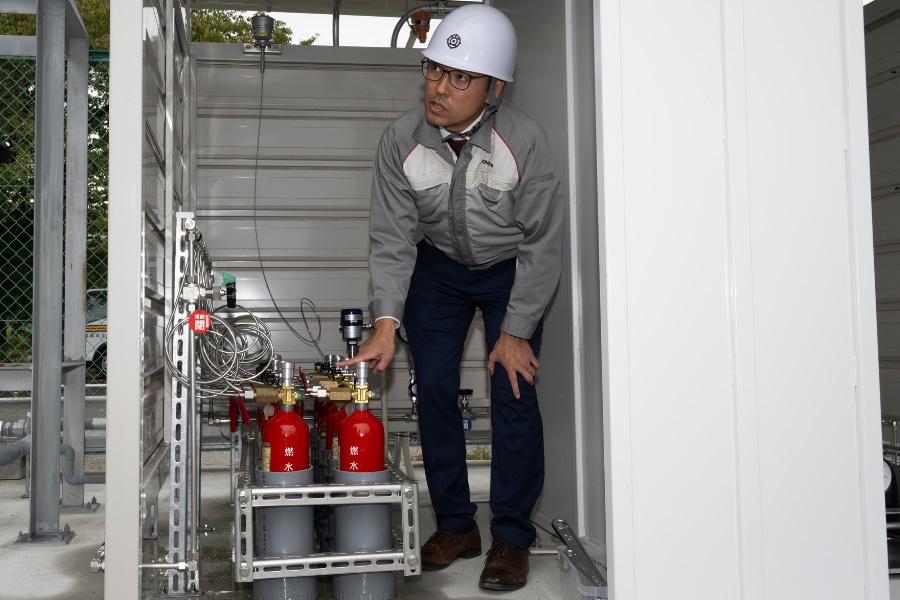
Cylinders are filled at a facility newly built at the Community Center in Namie town. The operator connects the small cylinders to a filling device and then presses a switch, which immediately starts filling the cylinders with hydrogen. Filling stops automatically when the cylinders are full.
At the community center, a delivery driver places six filled cylinders in a case and quickly stacks them on the back of a truck. The driver then takes the cylinders from the community center and delivers them to homes.
Using hydrogen in the home to achieve decarbonization
The small cylinders loaded onto the truck are then delivered to homes in the town. Following the truck, the delivery came to a home inside of which a cafe was operating. The delivery driver connected the small cylinders one by one to the equipment installed outside that connects them to the fuel cell. Both the loading and unloading of the cylinders was a quick process.
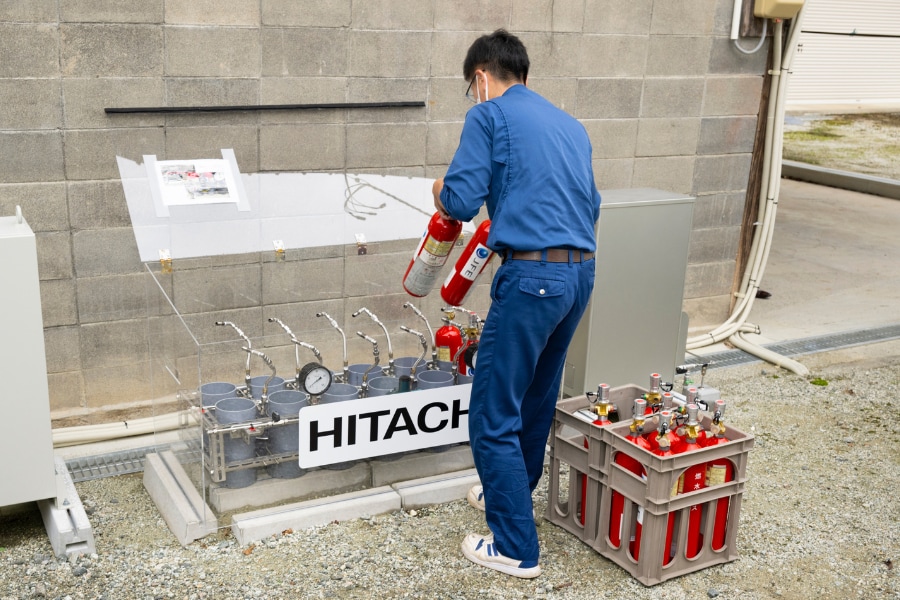
Electricity generation using hydrogen is set to automatically start in the evening. Ms. Hiromi Hatakeyama, who uses the electricity to power her home and her cafe, says with a smile: “This is my first experience to generate electricity with hydrogen, but I’m feeling very comfortable to find that there is no difference to using electricity from the grid.”
“I took an interest in the demonstration because a hydrogen station has been built in the town to fill cars, but I am happy that electricity used at home can also contribute to decarbonization and the environment,” she said with satisfaction.
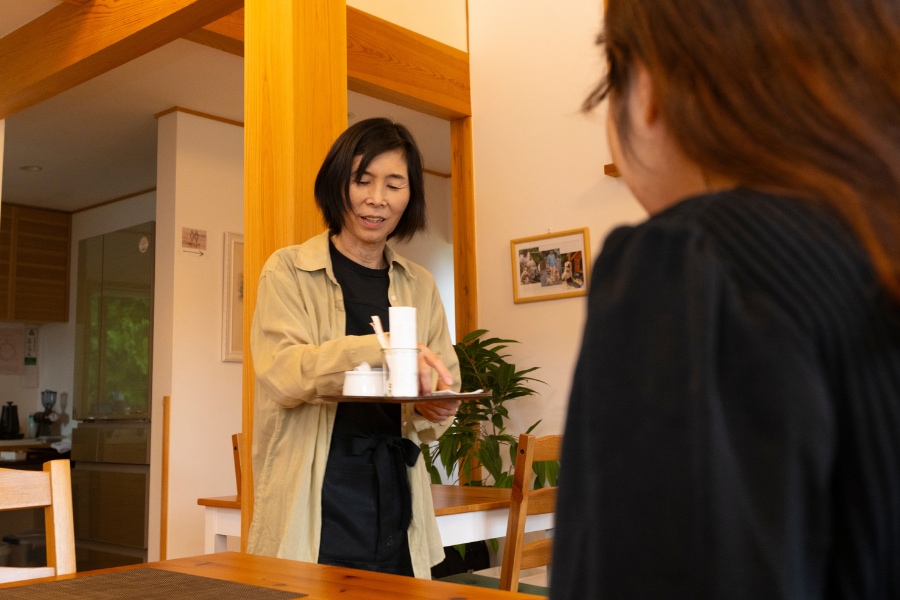
The small cylinders only need to be delivered once a week. Watanabe said assuredly: “Unlike electricity, it is easy to store hydrogen in cylinders. In the future, hydrogen will no doubt play a role as an energy source during natural disasters or on remote islands that are not connected to power lines.”
Objective: Local production for local consumption of hydrogen
Since the 2011 Great East Japan Earthquake, Namie town has been tackling urban development that is not dependent on fossil fuels and has been aggressively developing renewable energy. One of these initiatives is the Fukushima Hydrogen Energy Research Field (FH2R), a research center for hydrogen energy established in 2020. It is one of the world's largest hydrogen production facilities, producing clean hydrogen without CO2 emissions by electrolyzing tap water using electricity generated by solar power.
With the start of clean hydrogen production, Namie town has declared itself a "Zero Carbon City" as advocated by Japan’s Ministry of the Environment to achieve net-zero carbon dioxide emissions by 2050. However, there are still challenges to overcome in order to truly achieve being a “Zero Carbon City.”
“We needed to create an environment in which the town's residents could use hydrogen easily in their daily lives,” said Mr. Naoki Kobayashi of Namie town's Industrial Promotion Division, explaining the reason for starting the demonstration.
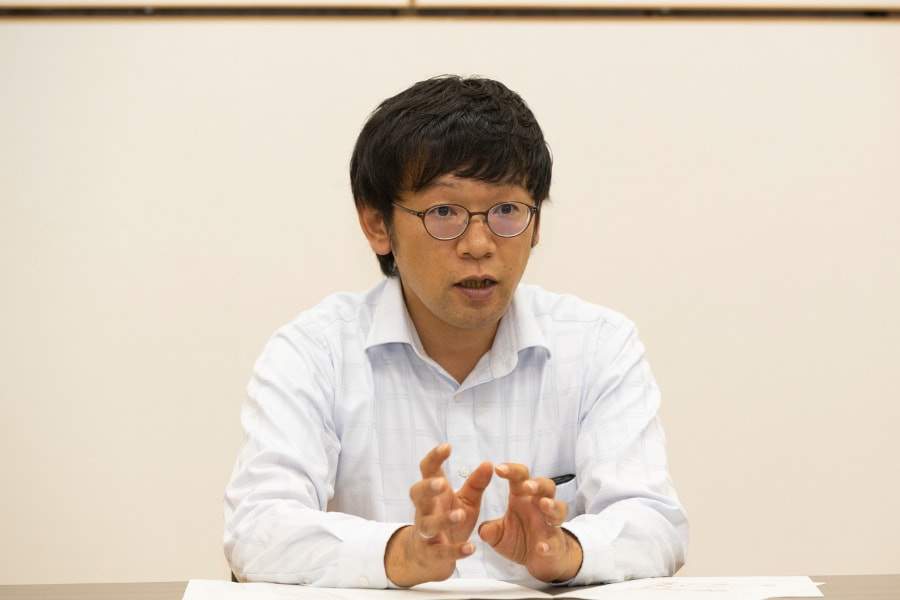
Reductions in greenhouse gas and CO2 emissions cannot be achieved by producing hydrogen alone—it must also be used in every home. Mr. Kobayashi hopes that the delivery of small cylinders filled with hydrogen and the generation of electricity at home will be one option for achieving a “Zero Carbon City”. He said: “Our goal is to achieve local production for local consumption of hydrogen.”
Rather than waiting for society to make use of hydrogen, Namie town is taking on the challenge of becoming a role model. Hitachi will support Namie town's challenge by analyzing the data obtained from the demonstration to contribute to the realization of a carbon-neutral society.

